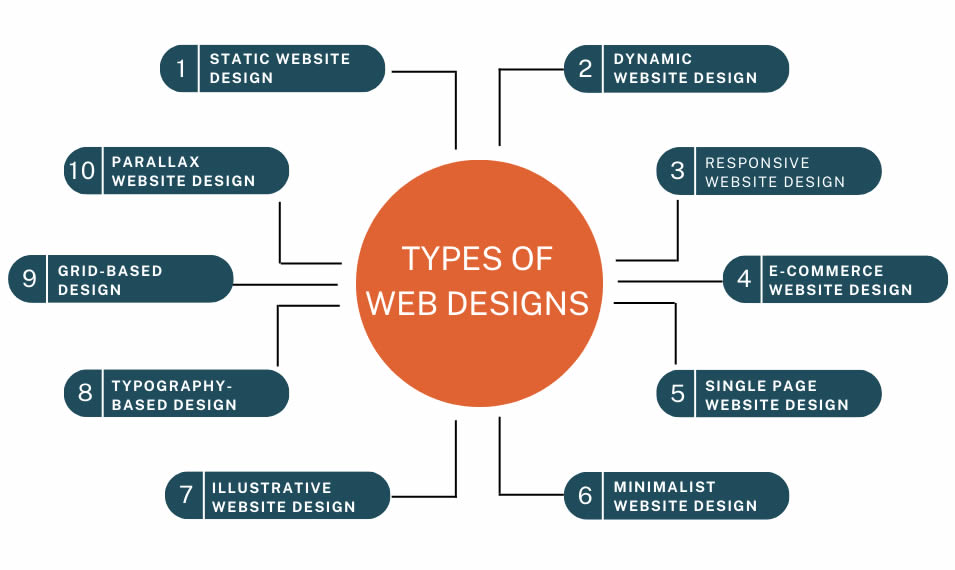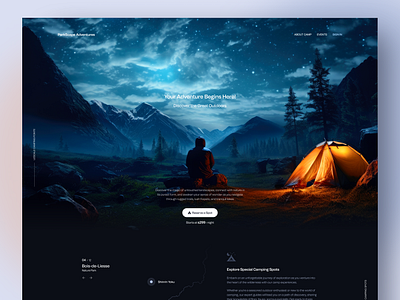Why Website Design Is Crucial for Structure Trust and Engaging Customers
In today's electronic landscape, the relevance of website design expands far beyond looks; it is an important consider establishing trust and fostering customer engagement. A well-crafted site not just shapes impressions but likewise influences customer experience, which can determine the long life of client connections. As organizations aim to produce a legitimate online existence, the complexities of layout components, navigating, and responsiveness become vital. Nevertheless, the effects of these style choices may not be quickly obvious, motivating a better exam of how they converge with customer perceptions and behaviors.
The Influence of First Impressions
The minute a site visitor arrive on an internet site, they quickly create an impact that can either involve them or drive them away. This immediate examination, commonly based upon visual elements, layout, and general aesthetics, plays an important role in determining whether users will certainly discover more or exit right away. Research study suggests that individuals typically make judgments about a website's credibility within mere seconds, emphasizing the demand for a specialist and refined style.
A well-structured internet site that mirrors brand worths promotes count on and urges individuals to delve much deeper right into the material. Trick aspects such as color schemes, typography, and images should align cohesively to produce an aesthetically attractive experience. Conversely, a chaotic or out-of-date style can evoke uncertainty, leading possible customers to wonder about the brand's integrity.
Moreover, the initial impact extends past plain visuals; it encompasses navigating ease and performance. An internet site that is straightforward and intuitive makes sure site visitors feel comfortable discovering its features. Eventually, the influence of impressions can not be overemphasized; they lay the foundation for user involvement and lasting relationships. Purchasing effective website design is, consequently, a vital strategy for building trust fund and welcoming users to communicate with the brand.

Importance of Individual Experience
A favorable impression establishes the phase for a much deeper connection between the customer and the site, making user experience (UX) a crucial part of website design. UX encompasses all aspects of the end-user's interaction with the internet site, affecting their satisfaction and interaction levels. A well-designed UX makes certain that customers can browse the site without effort, find information swiftly, and full preferred activities easily.
Secret aspects of reliable UX consist of receptive style, which permits smooth gain access to on numerous tools, and clear navigating that reduces cognitive load. When customers experience friction, such as slow loading times or complicated layouts, they are likely to abandon the site, bring about potential lost sales and decreased count on.
Moreover, a favorable UX cultivates psychological links, urging individuals to return and suggest the site to others. Web design. This not just boosts client retention however also broadens the customer base via word-of-mouth. By focusing on UX, services can produce an atmosphere where individuals feel valued and recognized, ultimately driving conversion rates and lasting commitment. In today's competitive landscape, buying customer experience is not simply beneficial; it is essential for lasting development and success.
Structure Brand Name Credibility
Establishing brand name reliability is critical for promoting trust fund among individuals and ensuring long-lasting engagement with a web site. A properly designed web site serves as the structure whereupon reliability is developed. Crucial element such as professional aesthetics, instinctive navigation, and mobile responsiveness show a brand's dedication to top quality and user contentment.
Moreover, incorporating aspects like client endorsements, case studies, and industry accreditations can significantly boost perceived trustworthiness. These elements provide substantial evidence of a brand name's dependability and competence, strengthening individuals' self-confidence in their options.
Constant branding across all digital touchpoints likewise plays a crucial function. Recognizable logos, consistent color pattern, and natural messaging develop a feeling of experience and dependability. They are much more most likely to view the brand as reliable and authoritative. when customers see a constant brand visibility.
On top of that, safety and security functions such as SSL certificates and transparent personal privacy plans assure users that their information is risk-free, further strengthening trust. By focusing on these elements in web design, organizations can effectively construct brand reputation, developing a solid structure for customer commitment and long-lasting success in an increasingly digital marketplace.
Enhancing Client Engagement
Involving clients effectively requires a tactical method a fantastic read that surpasses plain aesthetics. Web design. A properly designed web site utilizes aesthetic components, content, and capability to create an immersive experience that records site visitors' focus and urges communication. Key elements include instinctive navigating, compelling calls-to-action, and strategically put material that resonates with the target audience
Interactive functions, such as surveys, quizzes, and comment sections, cultivate a sense of neighborhood and motivate customers to participate proactively. This involvement not only improves individual experience yet also gives valuable understandings into customer preferences and actions. Furthermore, including multimedia components like videos and infographics can share info a lot more dynamically, maintaining customers involved much longer.
Furthermore, personalization plays a crucial function in boosting consumer engagement. Tailoring content based on individual habits and choices makes visitors really feel valued and understood, increasing the likelihood of return brows through and conversions.
Eventually, a website developed with engagement in mind transcends mere capability; it ends up being a platform for building partnerships. By focusing on user experience through thoughtful style and interactive aspects, businesses can grow much deeper connections with their audience, promoting commitment and motivating ongoing involvement.
Mobile Responsiveness and Accessibility

Designing with availability in mind makes certain that all users, including those with handicaps, can engage with the website properly. Accessibility not just expands the audience yet also straightens with legal criteria and moral responsibilities.
Furthermore, internet search engine prioritize mobile-responsive and accessible web sites in their rankings. This implies that purchasing these aspects not only improves customer engagement but also enhances exposure in search results page. Finally, mobile responsiveness and availability are vital in website design, directly affecting user trust fund and overall client involvement.
Conclusion
By producing a visually attractive and user-friendly user interface, companies can enhance very first impressions and boost general customer experience. Inevitably, a well-structured web site not only boosts brand credibility however also grows long lasting consumer relationships, making internet design a crucial part of successful electronic technique.
A well-crafted internet site not only forms first perceptions but here likewise affects user experience, which can figure out the longevity of client relationships. Research study indicates that individuals usually have a peek at this website make judgments regarding an internet site's reliability within plain seconds, highlighting the demand for a professional and refined style.
Spending in reliable web style is, consequently, an important method for constructing trust and inviting customers to connect with the brand.

Comments on “Why Web Design Is Crucial for Building a Strong Online Presence”